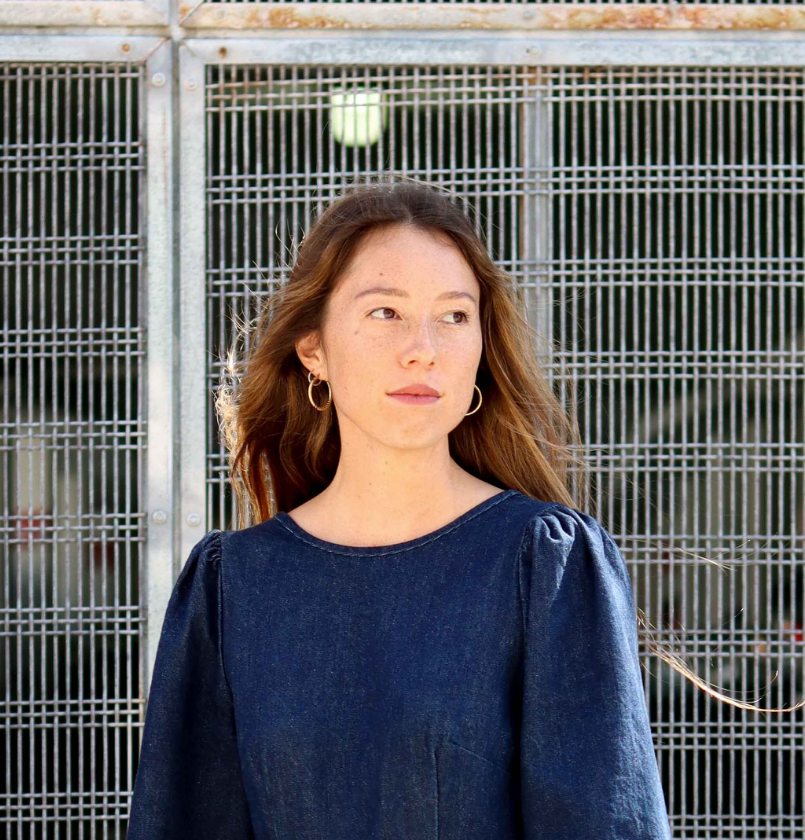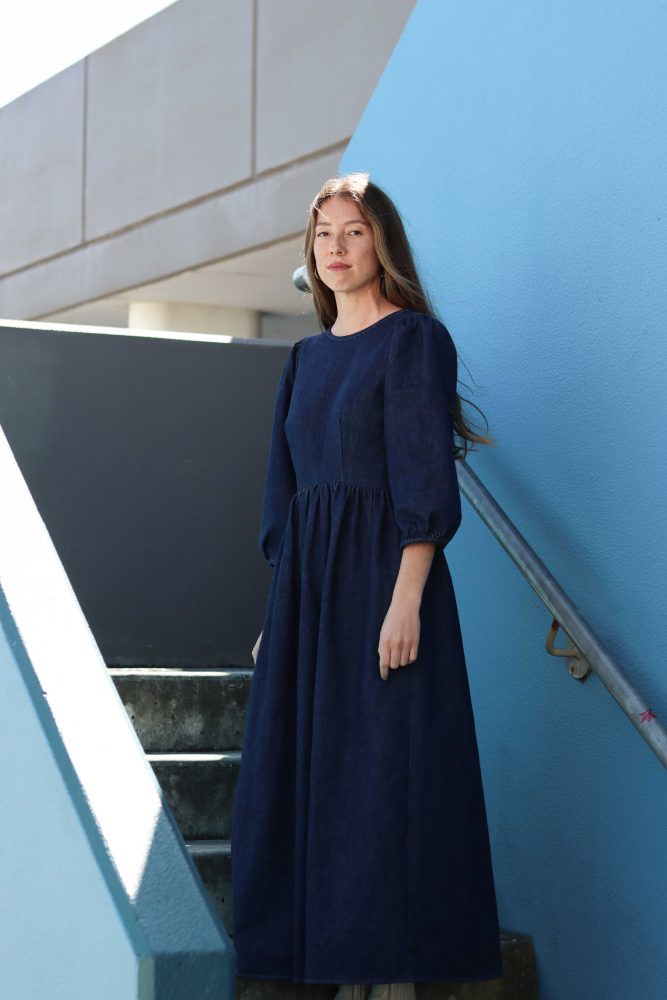Heartlines
Edie Mitsuda

Heartlines explores what it means to write – from the heart and soul – and where that writing takes us. Every writers’ journey is different, so we invite you to take a moment to read, pause and reflect on what it means to shape stories for the page.
Edie Mitsuda is a writer and teacher born and raised on Wilinyu/Nhanagardi Country in Western Australia. Now living in Perth, Edie is working with her mentor, Brooke Davis, to develop writing that sings and soothes. Read her interview with Anika Donnison below.
Anika Donnison: What are you currently reading and why? What drew your attention to it?
Edie Mitsuda: My mentor Brooke Davis recently gave me a copy of Homecoming by Elfie Shiosaki with the recommendation that there might be commonalities between it and my own writing. I hope, in many ways, that what she said is true. I finished the book yesterday feeling lucky to have read it.
AD: What was it about?
EM: The vital, intergenerational strength of Aboriginal women.
AD: When you’re not writing what do you do?
EM: If the weather is nice I’ll go out, walk, swim, read, drive the car somewhere. Sometimes I’ll paint or play the piano, though not often lately.
AD: What is a book that changed your life?
EM: Selected Stories by Alice Munro. I believe I have read and loved every one of Alice Munro’s short stories. Her writing is easy in the sense that each line has a precise momentum, as if the stories could not have been written or told in any other way, yet when you look closely at the works you notice how Munro moves her characters through time, expands them through it in all directions, inimitably, using an assembly of very delicate layers. Then there are the honest turns of phrase she is so good at that both enlighten you and wound you deeply.
AD: Has that influenced your own writing or inspired you in any way?
EM: Of course. Her unsentimental language and joyful, meaningful contradictions, I keep these things in mind as I’m writing. After reading Munro you suddenly know how to properly observe and honour ordinariness, and I mean this both within and beyond the context of writing.
AD: You have lived in regional Australia and worked as a high-school English teacher. How has this influenced your writing and why you write?
EM: When I first moved to the city, I found myself constantly referencing how I had come from the country. I did this with a frequency beyond what was necessary, and certainly beyond what was interesting. At the time I truly thought the idea of growing up in the regions had some kind of special significance to everyone on earth when, naturally, nobody cared about or even knew the place I had come from. Still, my hometown endures, like anyone’s. In this way, country Western Australia is a part of everything in my life because I am unable to separate myself from it, even after having left. Concerning teaching, the influence is both less and more explicit. The thing teaching has done for my writing involves a bashing and wringing of certain ideals into me: you must work hard, often, and be unswervingly resilient. It has also allowed me a greater appreciation of a craft that is difficult to access for the average child or person. It was not until I became a teacher that I realised what a privilege it is to find happiness and even satisfaction in literature.
AD: What inspired you to join the program?

EM: Centre for Stories, the notion of the organisation in its totality, made me want to join the program. Every experience I’d had with the Centre had been so affirming that I felt to become more involved would be a gift.
AD: What are the unexpected things that have come up in the early stages of your mentorship and how have you navigated them?
EM: The most unexpected thing is how Brooke Davis refuses to age. I was fortunate enough to take one of Brooke’s classes at university nearly ten years ago, prior to which I had little interest in writing as an activity. Brooke was so generous with me that I did whatever I could to impress her. Today the situation is relatively the same.
AD: How has having another person working on your piece shaped your own style so far?
EM: Stylistically the piece has not changed. What is different is my motivation, knowing that someone else will read the writing. My work is private to me and I speak about it to almost no one, yet I look at certain pieces and think, yes, I want this to be read, I want to get it as far from me as possible, I want to see the physical copy in a shop or in someone’s hands. To achieve this, I know the work must be examined, and now I have an examiner; it’s like an obstacle has been removed. Writing is isolating by nature. This year I’ve been blessed with a desk in a shared studio occupied by talented and attractive people who produce very visible outcomes of effort, like photographs or illustrations or designs. For me, I show up in the morning with nothing and I leave in the afternoon with nothing, and so on. To be able to discuss the writing with someone else who says: absolutely, I know, didn’t anyone tell you this is the way it was going to be, makes you feel less like you are cruelly pummelling yourself day after day.
AD: When you started the program, you wanted to finish the novel you had started, with themes about culture, womanhood, loss and the complexity of human relationships. How has that developed so far?
EM: Whenever anyone asks me how the novel is going I always give roughly the same answer: fine, I don’t know. This is not out of a desire for flippancy, it is because unfortunately my critical perspective that tells me whether what I’m doing is good or bad has been sloughed away, draft after draft. I can only hope the novel is strengthening thematically. The earliest versions were disordered, congested with matter that spilled out in every direction. After writing, re-writing, removing parts, replacing them, I wish I had done it differently from the start, yet there is no frame of reference for me to observe and it’s clear I have no idea what I’m doing. Often I’ll ask myself what would happen if I realise in a year’s time, two years’ time, that the project is simply meritless. The response: well, I’d have to start something new. Surprisingly the notion is soothing.
AD: Walk us through an ‘aha’ moment you’ve had so far in the program.
EM: I am prone to bouts of irritation in which I will retreat, complaining harshly about the traffic and apartment living. There are times, weekly, daily, when I sincerely believe it would be better not to integrate myself with any groups, any communities, for fear of exposure to certain things, like humiliation, disappointment, jealousy. I am grateful to this program for reinforcing the obvious idea that yes, as a writer you will at some point need to be by yourself, but it does not always have to be this way.
AD: Who is your dream collaborator?
ED: Lee Lin Chin. Aside from her enchanting wardrobe, she is quite literally the only Asian woman I saw with any regularity when I was a child.

Anika Donnison studied Professional Writing and Publishing at Curtin University. She has appeared in GROK and COZE. She currently works as a Social Media Coordinator for Pegasus Professional Accounting.
Writing Change, Writing Inclusion is Centre for Stories’ signature writing program for 2021 to 2023. Generously funded by The Ian Potter Foundation, Australia Council for the Arts, and Centre for Stories Founders Circle, this writing program features mentoring, hot desk, and publication opportunities for emerging writers from culturally and linguistically diverse backgrounds and/or Aboriginal and/or Torres Strait Islander backgrounds.